My Western Road Trip Turned Into the Apocalypse
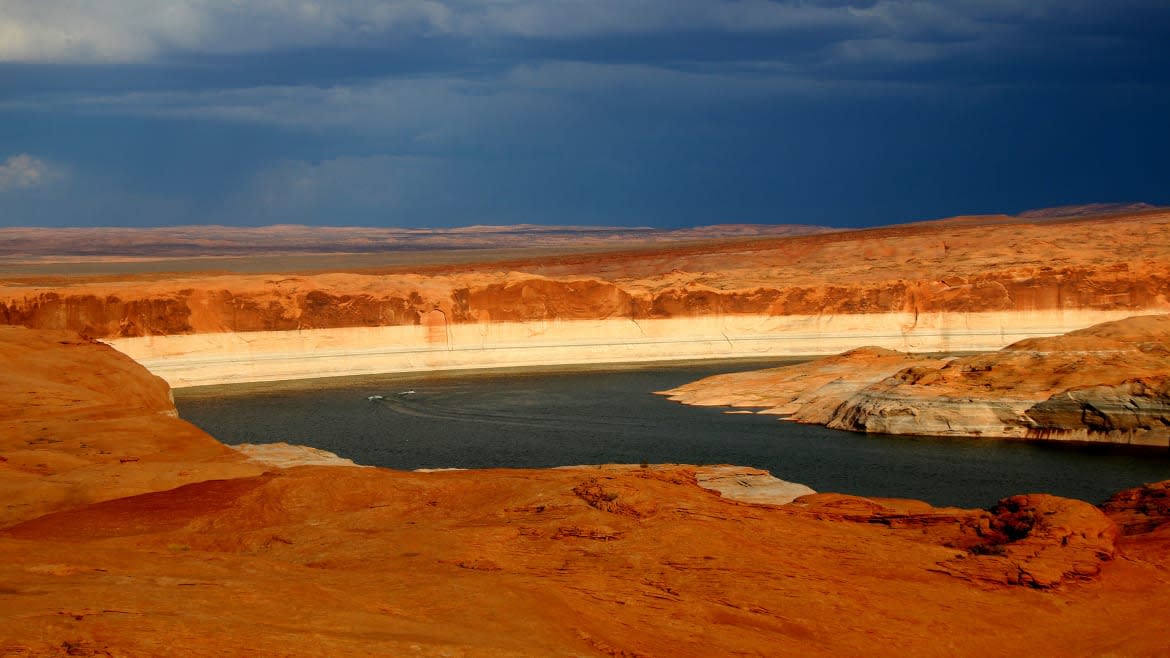
After too long in New York City, I was eager to take my new hybrid from California into the intermountain West. It sounded like a great road trip. Instead it turned out to be a drive into the apocalypse.
Ominous signs appeared when I crossed the Sierra and passed through the town of Fallon, Nevada, on U.S. Highway 50, the “loneliest road in America.” On one side of a storefront church were placards: “TRUST JESUS” and “WARNING /REPENT/Luke 13:3.” The opposite wall had a poster of a burning American flag: “Your country in PERIL / Your liberty at RISK / WAKE UP AMERICA.” In Austin, the next town 111 miles east in the Great Basin desert, another sign: “Don’t blame me I voted for TRUMP.”
As I crested the summit of the Toiyabe Range, there were sudden swarms of large insects in the road: Mormon crickets. They don’t fly, but some were apparently jumping. They hit my windshield, striking loud as gunshots. Their numbers have exploded due to climate change, scientists say, because drought and warming temperatures create favorable conditions in the West for this species destructive to crops. They travel by the millions and billions. Farmers have deemed the outbreak “biblical.”
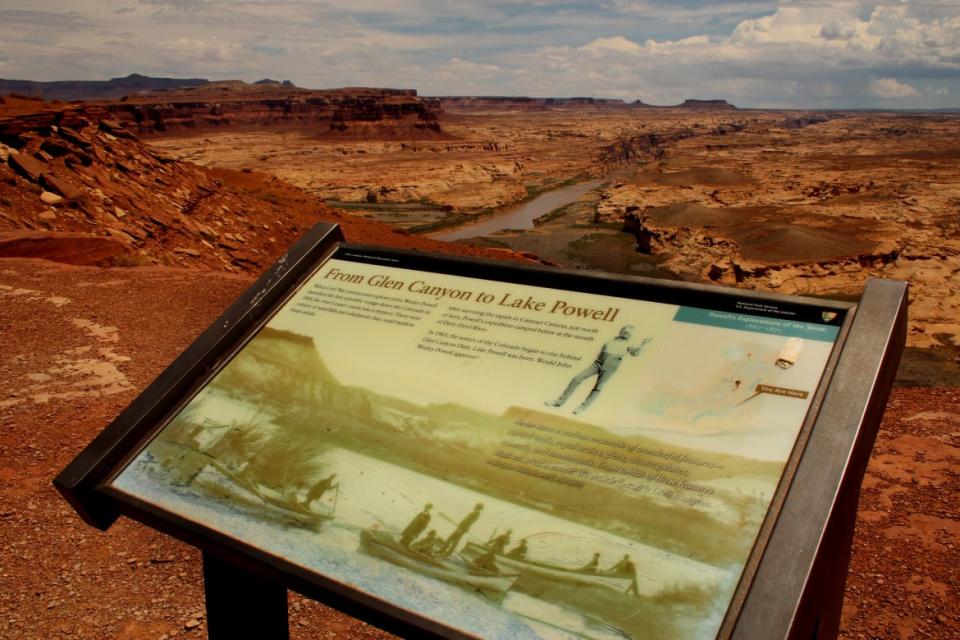
I expected to witness the impact of climate change on my trip—but not this soon. My ultimate destination was Lake Powell, the reservoir on the Colorado River. I’d seen pictures of the bleach-white “bathtub ring” from the low water levels, on both lakes Powell and Mead, and I wanted to investigate first hand. There’s no sense of scale from the news photos I’d seen. It’s just a line on rock.
I was in for a surprise when I arrived at Bullfrog, a marina in the center of the reservoir. I’d been here twice. The first was in 1976, when on a month-long journey I walked and roped my way across canyon country, following the Colorado River. The second was in 1996. On both visits two huge bays of the lake impeded my travel. The first time I walked miles to the north to circumvent the water; the second I used an inflatable kayak to reach the base of a massive slickrock formation called the Waterpocket Fold.
The bays had shrunk to slim fingers of water. It was now possible to walk almost the exact route I’d floated over a quarter of a century earlier.
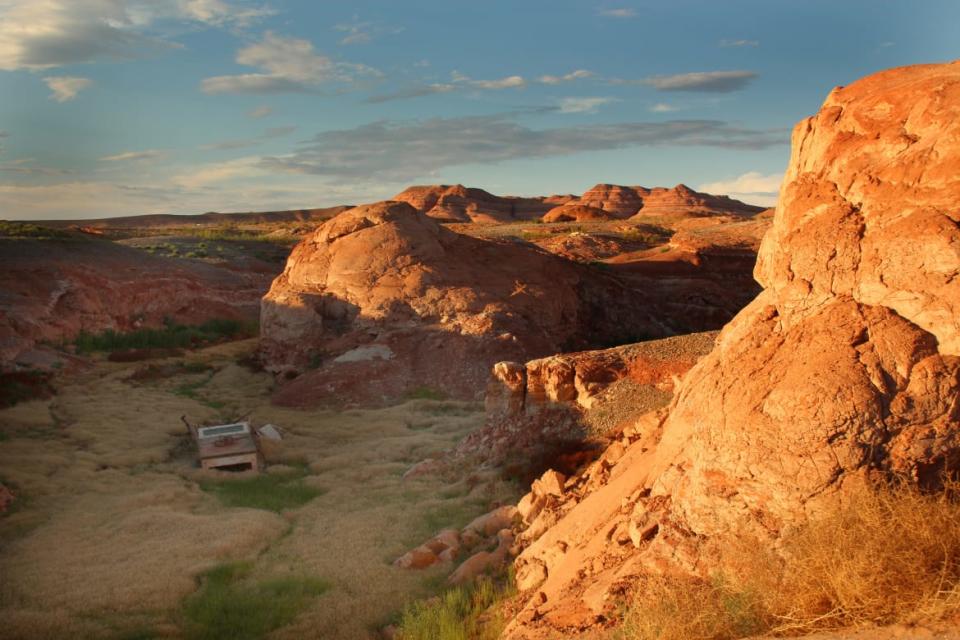
I dropped beneath what had been the high water mark. Benches on the rim of a canyon sprouted rabbitbrush and invasive Russian thistle. This was in the “bleached” zone that you’ve seen in pictures. It looks white from a distance, but it didn’t feel that way hiking here. The slickrock was vibrant orange in the low afternoon sun. It appeared the lake had never existed. But there were signs of the now-distant water: occasional boat anchors, made of concrete or iron, tethered to rotting rope or rusting cable, and scattered gleaming white shells of corbiculidae, an invasive freshwater clam from Asia. I found a route into the deepening canyon that had been submerged for decades. Around a bend I came upon the ruins of a houseboat that appeared to have burned and sunk. The rusting hulk rested in a meadow of a floodplain, nearly 170 feet below what had been the surface. The diminished lake was around the next curve in the canyon.
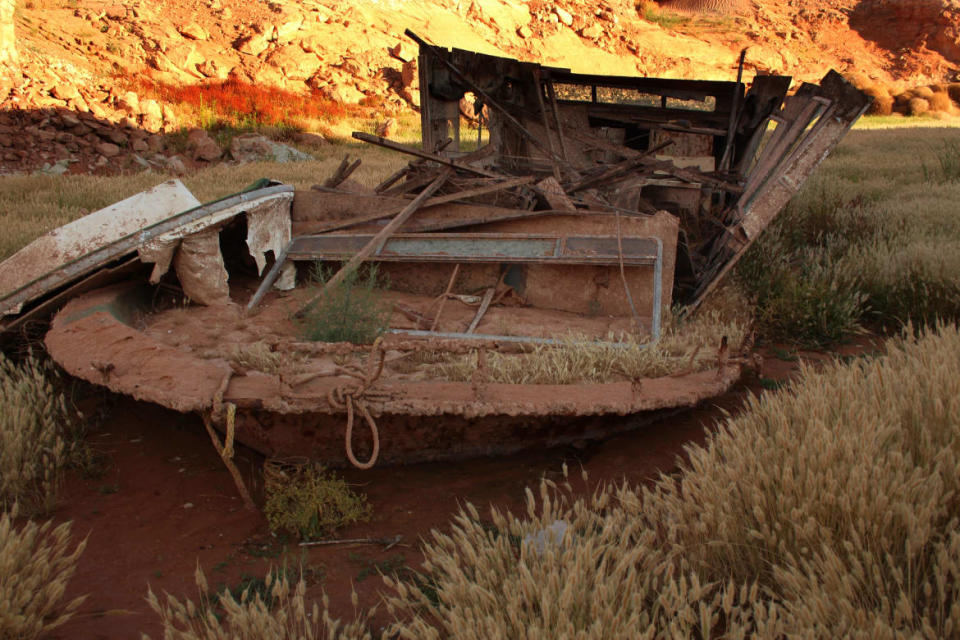
The wreck was spooky. I peered through broken windows in the fiberglass walls, half expecting to find human skulls, not from possible mob hits like the corpse found in the rusting barrel at Lake Mead, but from drunken tourists. The pilot wheel was crusted but still turned. It was quiet save for the sudden cry of a raven.
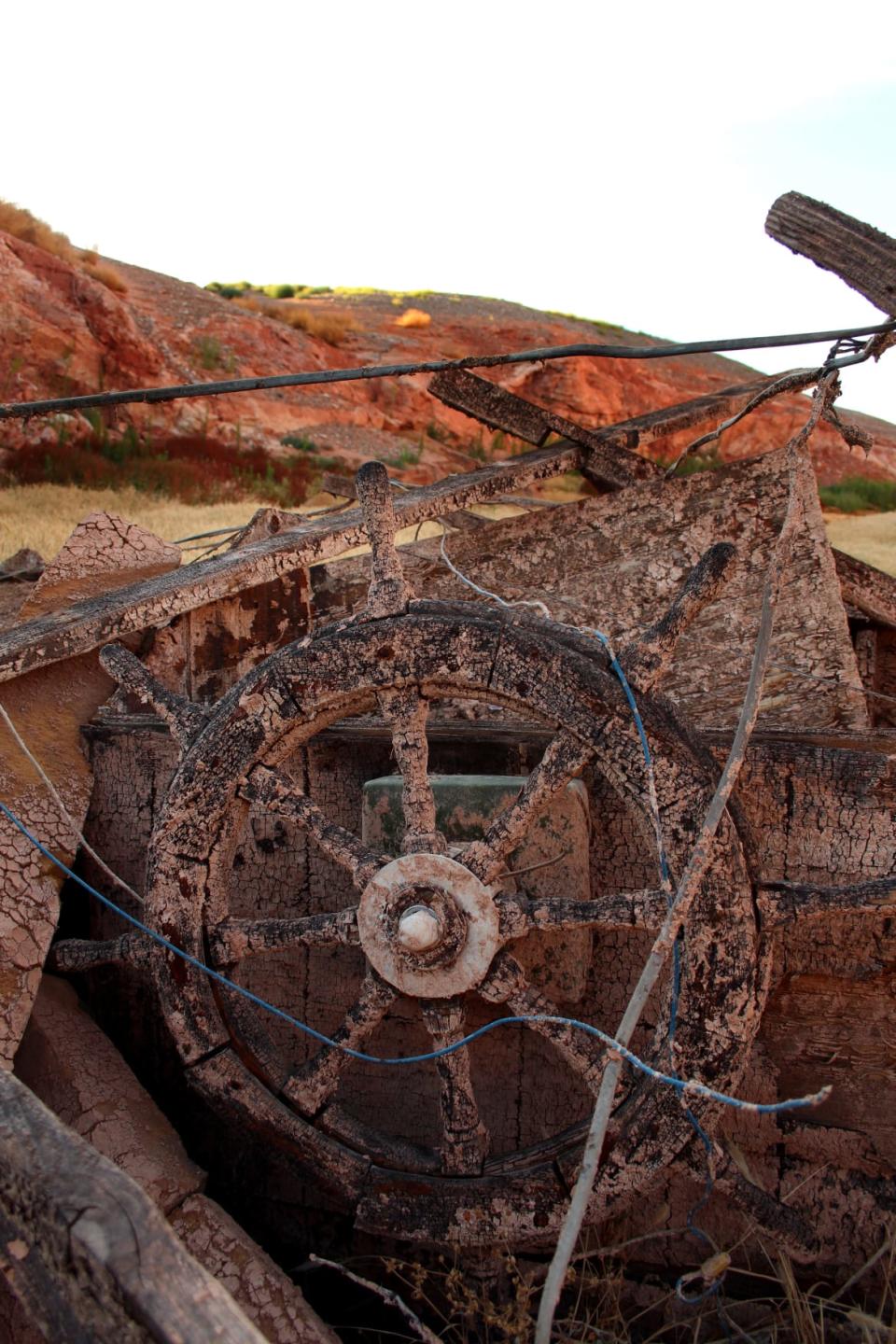
In that moment the bathtub ring became tangible: standing inside the boat and looking up beyond the canyon rims, I could see a distant outcrop and the top of the white line. It was a stunning distance above. I imagined roughly being on the 15th floor of a building, and what it feels like to look down from that height. To get a sense of this volume, consider that Manhattan is nearly 28 square miles. Lake Powell when it was full was more than 250 square miles. Accounting for topography, that not all surface area is flat, it would probably take a half dozen or more Manhattans flooded 15-stories deep to equal the amount of missing water.
I lingered at the ruins of the boat. It represents our water-scarce future. I was also looking at my future. A friend and I are seeking to buy a home in the canyons of southern California. The local water district often uses Colorado River water. Our goal is to create a compound that is as sustainable and carbon neutral as possible. We’re calling it “the project.” The easy part is electricity—photovoltaic panels and batteries have fallen in price.
Water is a trickier proposition. But there are things that can be done. Every 10 inches of rain falling on 2,000 square feet of roof equals 12,000 gallons. It can be piped from gutters into cisterns or tanks. (The city of Tucson offers $2,000 rebates to water customers who purchase cisterns.) Water can also be collected from patios and drives. We hope to harvest anywhere from 20,000 to 50,000 gallons. That’s not a year’s supply. But it will make some difference.
In the coming days I explored other parts of the former lake. The Colorado River is again flowing through Cataract Canyon and upper Glen Canyon. Silt is being washed free from plugged tributaries. Trees are growing. Nature does quickly heal quickly.
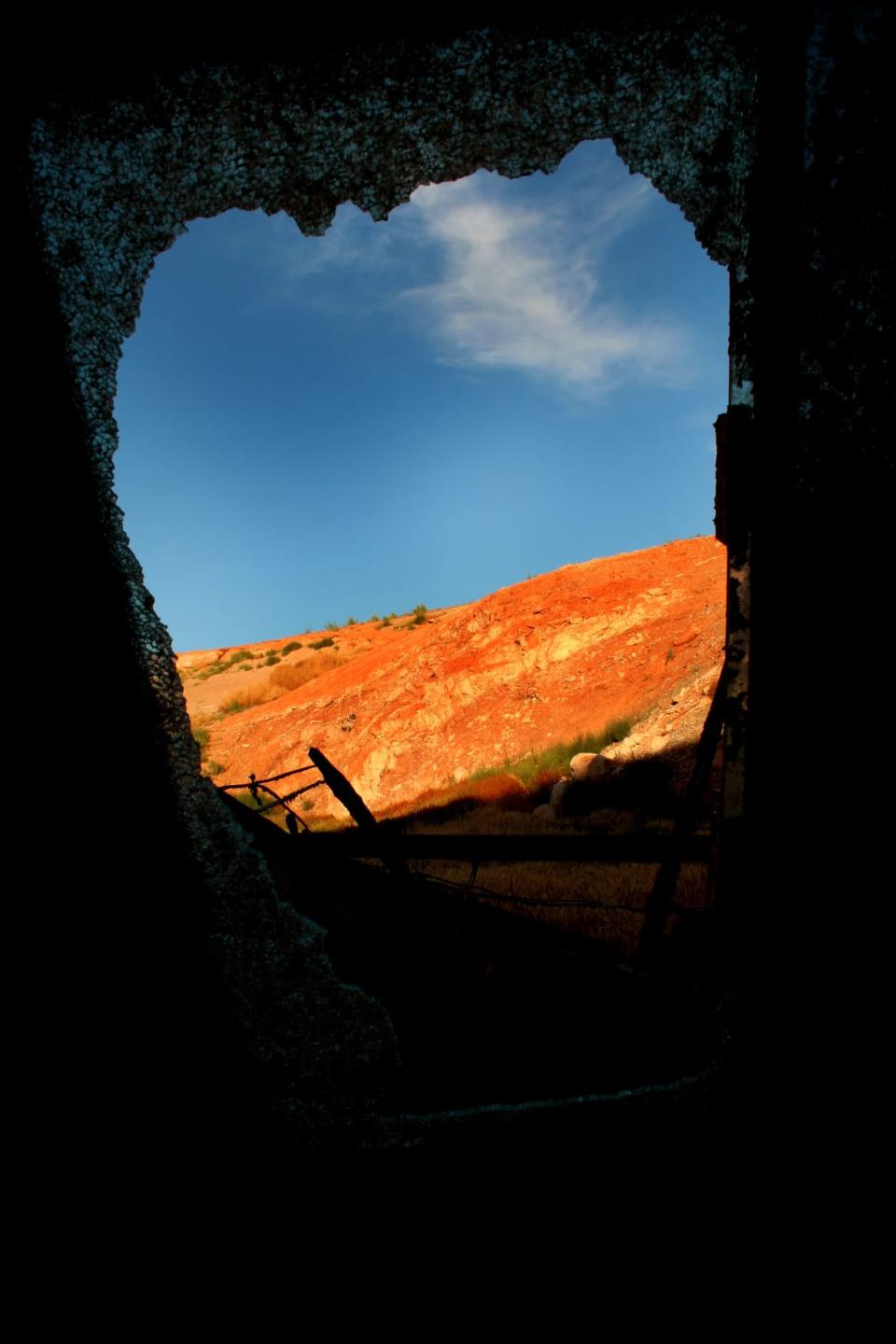
I ended my trip on the South Rim of the Grand Canyon, imagining how long it took for the Colorado River to carve the chasm. That process has ceased, for now. The river runs clear from the base of Glen Canyon Dam. The abrasive sediment is being held back in Lake Powell. Some estimates posited that the lake would fill with it and become a marsh in 700 years—10 human lifetimes. You can see this future in the muddy delta at the upper end of the reservoir. The river eventually would have overflowed the dam, resuming carrying sediment downstream.
Our hubris as humans is believing that what we create is permanent. Dams are temporary. I’m writing of Lake Powell in the past tense because water managers are going to have to make a choice as climate change worsens. We can either have Lake Powell, or Lake Mead. But we cannot have both.
Even before climate change it was foolish to develop the arid West in the manner that happened—as if water existed in limitless quantity. John Wesley Powell, who led the first expedition exploring the Colorado River system in 1869, warned that “there is not enough water to supply the land.” He argued for sustainability. Congress ignored his report and encouraged pioneer settlement and industrial-scale farming.
A century later, when confronted with the fact that Lake Powell would someday become useless, Floyd Dominy, the U.S. Bureau of Reclamation commissioner when the dam was built, simply said: “We will let people in the future worry about it.”
That future seemed far off in 1997, when I was teaching at Stanford University and my next-door office neighbor was Jon Else, the documentary filmmaker who co-directed the PBS series, Cadillac Desert. It was based on Marc Reisner’s eponymous book primarily about the Colorado River and the failure of water policy in the American West.
One afternoon Jon and I debated what was going to happen with Lake Powell. Jon, channeling Reisner’s work, insisted it would be empty in our lifetimes. I scoffed, said no way. As much as I wanted Jon to be right, it just didn’t seem possible. I bet him a six-pack of beer if I lost. And we’d drink that beer on the bank at the confluence of the Escalante and Colorado rivers—a site then over 400 feet under water. “It’s a bet I want to lose,” I said a quarter of a century ago.
“Are you drinking that cold beer at the mouth of the Escalante?” Jon asked shortly after I recently phoned. Climate change had accelerated his prediction. “It put it on meth,” I said, adding I wasn’t going to welch, that even though that site is still submerged, maybe we’d get to drink that beer in Glen Canyon given the rate the lake is shrinking.
“Sign me up!” he said.
Get the Daily Beast's biggest scoops and scandals delivered right to your inbox. Sign up now.
Stay informed and gain unlimited access to the Daily Beast's unmatched reporting. Subscribe now.

 Yahoo News
Yahoo News 
